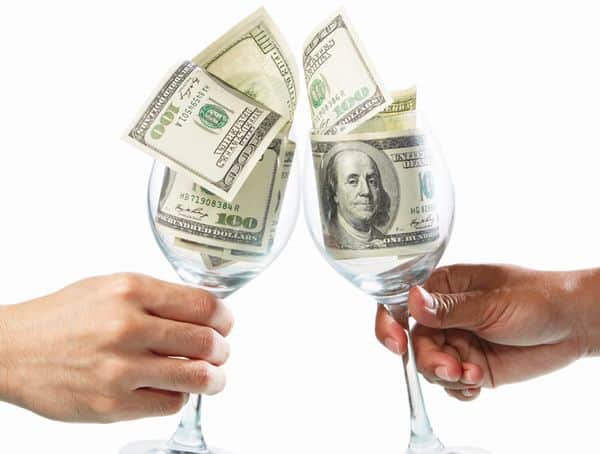Tariffs are forcing US retailers to get creative: and that includes improving the client experience with own branded online collection management that shows them where their wines are stored in Europe, improves tracking and reinforces ownership. It’s another example of how Government intervention and legal shifts are driving digitisation of the US fine wine industry.
From 18th October French, Spanish, German and UK wines were subjected to a 25% import tariff on wines less than 14° alcohol by volume (ABV). That lets off much of Spanish output and hotter Mediterranean regions.
Wine has got caught up the long running trade dispute between Airbus and Boeing – each accusing the other of being heavily subsidized – so it’s no surprise that countries that make bits of Airbus planes have been specifically targeted. The US side is quoted as saying they will “continually re-evaluate these tariffs based on our discussions with the EU”, suggesting they expect to use this tactically in negotiations. But for now it’s hard to see much movement before the World Trade Organization (WTO) hears the EU’s reciprocal complaint next spring.
With Toulouse the center of Airbus operations, it’s easy to conclude the choice of ABV threshold aims to hurt France particularly hard.
Unfortunately the impact on US small and specialist importer businesses is likely to be equally painful. There really wasn’t much time to act after the announcement of tariffs and the deadline. Even if they’d had longer, there’s only so much free cash that will have allowed you to ship over as many pallets or containers of wine as possible before the 18th October deadline (and by all accounts there was indeed a veritable tsunami of wine that made it over in time).
What if you’re a specialist with a niche in Jura, the Loire and Germany? Are your customers going to pay 25%+ more? Almost certainly not, so that means either absorbing as much as possible and/or asking your European suppliers to take a hit. There are obvious risks to both of those tactics beyond the short-term. Anything beyond the short term is going to feel existential – how long can I keep gong for and will my producers still be there for me when it’s all over?
If there’s a ray of hope, it’s that many wines from recent vintages may well be exempt given the torrid summers of 2018 and 2019 that pushed many wines to 14° ABV or above, even in Burgundy, but that’s small consolation for producers and importers of fine wines favoring elegance and freshness over power and muscle.
As for 2017 futures, paid for by customers, and now physical, I have never seen so many orders parceled up, cling-filmed and waiting to be picked up as I did in the first week of October in Burgundy. It was a race to get the wines into a US port before October 18th. Even so, some will have missed the deadline, logistics needing time to organize.
Will top producers in blue-chip regions adapt their product to meet exemptions as some pundits have suggested? I’d expect not, since producers have been progressively moving away from the modern styles of the last 20 years, and finding that finesse and complexity pays dividends with critics and their core consumer base. Anyway it would be pretty dumb to respond to the tactical use of tariffs in this way, since it could all change again come the summer.
So what to do? Believe it or not, there are a couple of moves you can make that ought to play out well at the top end of the wine market.
- Sell wines with longevity as tariff-busting futures, and store them for your customers in Europe for a while until the tariff wars blow over. Storage is cheaper in Europe than in the States, and there are storage options for you all over Europe, from Gibraltar (brand new and inside the Rock!) to Denmark in the north. In the UK you can store In Bond at rates that are typically half those charged in North America. These are import tariffs; so if you don’t import you don’t get clobbered.
- Add value to customer relationships with online access to wines purchased lying overseas, providing a sense of proximity and reinforcing ownership. White labelling client access to stored wines extends your brand into collection building and tracking, and puts you in a great position to better understand your customers and earn a greater share of wallet.

